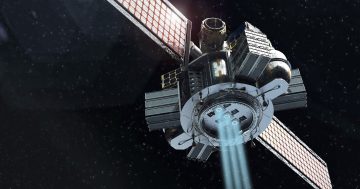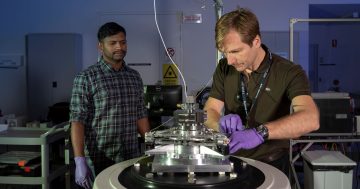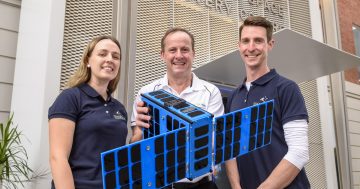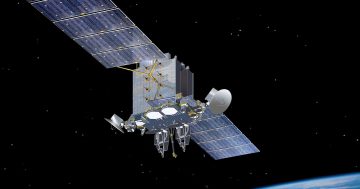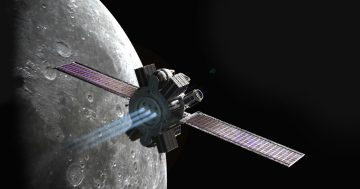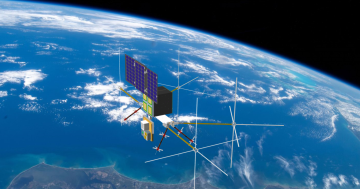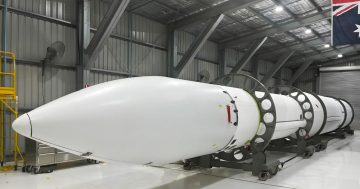Jake Sturmer, Christian Cominos, and Bethanie Alderson* say the surprise discovery of radio signals could help track space junk and limit global security risks
 Scientists are testing a new system to track the thousands of satellites and space junk orbiting Earth using the same radio transmissions that make a car’s radio sing.
Scientists are testing a new system to track the thousands of satellites and space junk orbiting Earth using the same radio transmissions that make a car’s radio sing.
The surprising discovery came from a radio telescope intended to look back 13 billion years to the first formation of stars and galaxies in our universe.
“Back in 2013 we turned on this new radio telescope called the Murchison Widefield Array … [and] pretty quickly we found signals that clearly weren’t astronomical,” Curtin University astrophysicist Steven Tingay said.
“And after a little bit of work, we tracked down the fact that they were due to objects in space, reflecting FM transmissions from radio stations on Earth.”
Junk affects key satellites and defence
As more and more satellites are launched into Earth’s orbit, keeping track of everything in space and the tens of thousands of bits of space junk is a major challenge.
It is known as Space Domain Awareness.
“Something that is the size of a pea can be lethal to one of these satellites that we depend on for these critical technologies,” Australian National University Institute for Space deputy director Cassandra Steer said.
Satellites provide crucial communications, weather and navigation information — and are also vitally important for defence.
“Our eyes and ears are in space,” Dr Steer said.
“Every country depends in some way on space technologies and our militaries are highly dependent on it.
“A lot of weapons are GPS based.
“The ability to track the movement of one’s own troops on land at sea, and in the air, and the ability to track adversaries [comes from satellites] as well.
“So we also need to understand the risks to those technologies, because if you want to compromise your adversaries’ eyes and ears, targeting their space system [is] a highly effective way of doing that.”
Field of antennas watching the sky
Curtin University has partnered with Nova Systems to build a passive radar system in the regional South Australian town of Peterborough.
It catches the reflections of FM radio signals and, with some astrophysics processing expertise, helps to track objects in Earth’s orbit.
“The technology that goes out here on Peterborough, the mature technology will see the whole of the sky above Australia, towards New Zealand, out to Christmas Island,” Nova Systems’ Space Precinct project manager Nick Kemp said.
“If you had these sensors spread around the world, you could essentially see everything that’s above us.
“The technology has been used for radio astronomy, looking at deep space and seeing how the universe formed.
“So it’s very, very sensitive.”
Professor Tingay and his team worked with another company in 2018, Silentium Defence, using passive radar at higher frequencies.
This trial in Peterborough will look at what can be revealed using lower frequencies.
By using different frequencies, scientists can detect different sizes and shapes of objects.
Space science in everyday life
Professor Tingay said these sorts of technologies and discoveries showed the real-world impacts of investments in fundamental science.
“Having an astrophysics background, and having an understanding of the radio astronomy techniques, has been fundamental in developing this new way of detecting these objects,” he said.
“That’s a really unique aspect to the work that we have, just because it’s spawned out of a completely different discipline.”
With construction due to start as early as this year on the world’s biggest radio astronomy observatory – the Square Kilometre Array – in Western Australia, scientists are excited for what the next breakthrough will bring.
*Jake Sturmer is the ABC’s North Asia correspondent based in Tokyo. Christian Cominos is a news reporter based in Port Pirie and files news for TV, online and radio. Bethanie Alderson is a news reporter based in Port Pirie and files news for TV, online and radio.
This article first appeared at abc.net.au.


